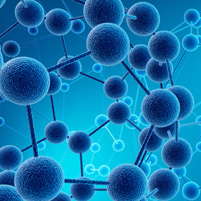No Small Gesture

Merely think about moving a cursor on a screen, or a robotic arm, and it obeys. Once relegated to the world of science fiction, this is now reality.
Top faculty in collaboration from Carnegie Mellon and the University of Pittsburgh are leading the way in developing neural prosthetics for the injured or paralyzed.
In simple terms, this means using sensors to read out signals from the brain, then computationally translating these signals to control a device, like a prosthetic limb.
"From a statistical perspective, it seems actually pretty straightforward," said Robert Kass, CMU professor of statistics.
He explained, "The thing that made it work was the discovery that neurons fire more when you move in a particular direction. That's the key because then you can get that directional information and use it to run the device."
Designing these complex systems requires interdisciplinary cooperation, as between CMU quantitative experts Kass, Byron Yu, and Steven Chase and Pitt experimentalists Andrew Schwartz and Aaron Batista.
"The development of better tools to monitor the brain led to data sets so large that the basic statistical tools were no longer sufficient," explained CMU's Yu, assistant professor of electrical and computer engineering and biomedical engineering.
"We've seen an influx from people trained in quantitative fields like engineering, statistics and machine learning, leading to fruitful collaboration for both sides."
The researchers are all members of the Center for the Neural Basis of Cognition (CNBC), a joint CMU and Pitt venture that brings together hundreds of neuroscience faculty and students from both universities, working on a variety of cutting-edge topics.
The Center is one of more than a dozen that are part of CMU's Brain, Mind & Learning Initiative, a unique, multidisciplinary initiative.
"I came to CMU because of the community," said Chase, now assistant professor of biomedical engineering. "Neural prosthetics spans several fields, from neurobiology and engineering through cognitive science, statistics and robotics. Carnegie Mellon is a world-renowned leader in these areas."
"Pittsburgh is one of very best places both for neuroscience and for computational neuroscience in particular," agreed Kass. "It's pretty much unbeatable."
As in any emerging field, there are challenges to overcome in the development of workable neural prosthetics.
"If you want to move cursor or arm in one of eight directions, we can do that reasonably well," said Yu. "Controlling a real arm with five fingers and many, many joints — that's a much harder problem."
In addition to its biomedical applications, this research is also likely to lead to basic scientific discoveries.
"Movements are generated by millions of neurons working together to contract muscles with very precise timing," explained Chase.
He added, "Brain computer interfaces provide a unique window for probing processes that would otherwise remain covert, like learning, A basic understanding of these phenomena will propel new treatments and approaches to a variety of neurological and psychological disorders."
Related Links: CNBC | Brain, Mind & Learning Initiative | Statistics Dept | Biomedical Engineering | ECE
